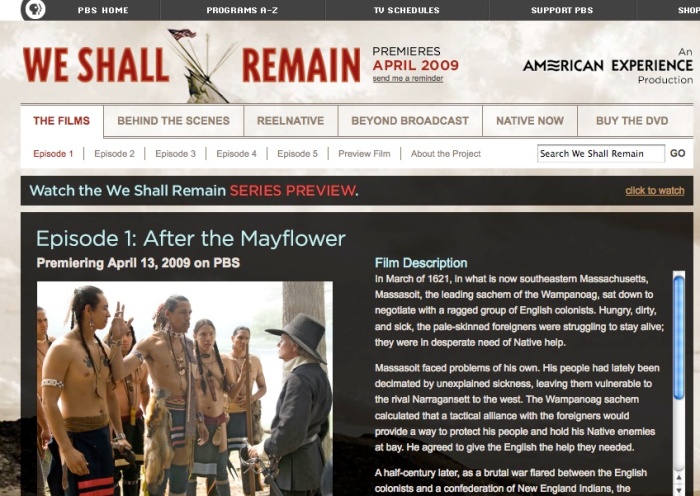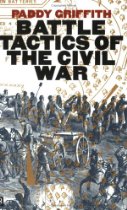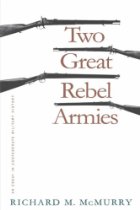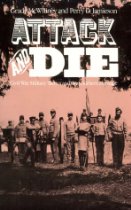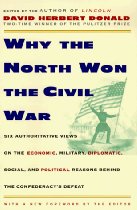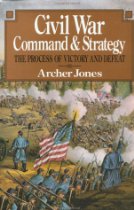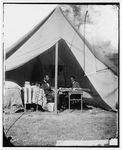Posts Tagged ‘AMU’
Excellent Summary of King Phillip’s War
For my fellow military history graduate students who have before or behind you the excellent course, Studies in U.S. Military History, you won’t want to miss Episode 1 of the new American Experience series, “We Shall Remain.” Tonight’s episode, “After the Mayflower,” includes an excellent summary of King Phillip’s War. It can be replayed online at PBS here.
Jill Lepore, author of the book, The Name of War: King Philip’s War and the Origins of American Identity (Vintage Books, 1999) which was required reading for the course, contributes significantly to the film. I wrote a brief post about her book back in September which you can (read here). Dr. Lepore is David Woods Kemper ’41 Professor of American History at Harvard University.
Highly Recommend both the series and the book!
.
Next Term’s Books are In! Mostly…
Ah the thrill of the sound of book boxes being dropped on my front porch and then the doorbell ringing. Nothing like it!!

One of two Amazon boxes delivered today.
Just over half of my books arrived today for next term’s class, Civil War Strategy and Tactics. See related post here.
I had to put them on my bookcase where I won’t open them until after finals. Too much to do before the term ends. Torture.
Apologies for short post. Know you’ll understand. Two papers due by Sunday and need to read the last two chapters of Holt. 
Next Course – Civil War Strategy and Tactics
I just registered for my next course, Civil War Strategy and Tactics, which will start March 2nd. Book list looks terrific and is on order. It’s also loaded on my virtual bookshelves which you can access by clicking on any of the books. I’ve updated “the courses” page here.
Course Description: This course is a study of the American Civil War with emphasis on operational contributions of Union and Confederate military leadership. Students examine Civil War battles on two levels: the strategic doctrine as formed by the major commanders and tactical developments that affected the conduct of battle at a lower echelon of command. Special emphasis is on the interplay between these levels in order to gain a comprehensive view of strategy and tactics in both armies from 1861-1865.
Technology in U.S. Military History – 1
My current course on Studies in U. S. Military History (see courses page here) is drawing to a close. We have been examining the last of Millett and Maslowski’s major themes which is that “the United States has used increasingly sophisticated technology to overcome logistical limitations and to match enemy numbers with firepower.” [i] I find this supportable in the sense that it has been possible to see a steady progression of technological prowess over time. Nowhere, arguably, have technological advancements been felt more than in the arena of weaponry.
Professor of history Alex Roland (Duke University) posits that “before the twentieth century, most soldiers and sailors ended their careers armed as they were at the beginning. New weapons were introduced slowly, if at all, and most professionals resisted the uncertainties new arms introduced.” But, Roland asserts, “by the second half of the twentieth century, this traditional suspicion of new weapons had changed to a reckless enthusiasm.” The phenomena of obsolescence on introduction entered the national psyche in that, by the time many “weapons entered service, their successors were being planned. This was especially true in large-scale weapons systems such as ships and aircraft. It even found its way into thinking about less complex military technologies, such as radios and computers.” [ii]
More in Part 2. Note I provide a link below to Professor Roland’s excellent article titled “Technology and War” which can be read online.
[i] Allan R. Millett and Peter Maslowski, For the Common Defense: A Military History of the United States of America, xiii.
[ii] Alex Roland, “Technology and War,” http://www.unc.edu/depts/diplomat/AD_Issues/amdipl_4/roland2.html Accessed 13 July 2008.
Next Course: “Studies in U.S. Military History”
I just took a break from working on my academic book review due today to register for my next class which starts April 7. “Studies in Military History” is the second in the “core” requirements courses and so deals with more general topics. The first was “Great Military Philosophers.” The course examines the military heritage of the United States from the colonial period to the present. “Through a study of the literature of American military history, this course is a study of the individuals, military policies, postures, organizations, strategies, campaigns, tactics, and battles that have defined the American military experience.”
The reading list looks outstanding. Since I’ve placed my book order, I’ve posted these books on my virtual bookshelves that you can find here. The breadth of conflicts dealt with required that I expand my shelf categories which I’m completely fine with. I’ll post more about each of these as I get into the sememster.
- American Civil War and The Origins of Modern Warfare
- A People’s Army: Massachusetts Soldiers and Sailors in the 7-Year War
- The Army and Vietnam
- Crusade: The Untold Story of the Persian Gulf War
- For the Common Defense: A Military History of the United States of America, Revised and Expanded
- A Revolutionary People at War: The Continental Army and American Character, 1775-1783
- War Without Mercy: Race and Power in the Pacific War
- The Philippine War, 1899-1902
- Doughboys, the Great War, and the Remaking of America
- The GI Offensive in Europe: The Triumph of American Infantry Divisions, 1941-1945
- The Name of War: King Philip’s War and the Origins of American Identity
- Strategies of Containment: A Critical Reappraisal of American National Security Policy During the Cold War
- Cobra II: The Inside Story of the Invasion and Occupation of Iraq
- Their War for Korea: American, Asian, and European Combatants and Civilians, 1945-1953
The instructor, Kelly C. Jordan, also looks excellent (ok they’ve all been excellent).
BA, History, Virginia Military Institute, 1986
PhD, Philosophy, The Ohio State University, 1999
MA, History, The Ohio State University, 1996
From the AMU staff biography site:
Kelly C. Jordan is a Colorado native who received his bachelor’s degree from the Virginia Military Institute but never quite got the hang of the South. Moving to the Midwest, he earned his master’s degree and Ph. D. from The Ohio State University. A retired Army lieutenant colonel, Jordan served for 21 years in the Infantry in mechanized and light units, including service in Operation Desert Shield and Operation Desert Storm. He retired from active duty in August of 2007. He is the author of numerous publications, including works addressing Military History, Military Education, and Strategy. He is currently preparing his Ph.D. dissertation regarding the combat effectiveness of the US Eighth Army in Korea for publication. Dr. Jordan has served on the faculties of the United States Military Academy at West Point, the United States Army Command and General Staff College, the United States Naval War College, and the University of Notre Dame, and he specializes in 20th century post-WWII land warfare, the Korean War, limited war, military leadership, and the development of US Army doctrine. He has won numerous awards for his teaching and writing, he is a huge Notre Dame football fan (even this year!), and he is always looking for ways to incorporate movie clips and other cool things into his classes, discussions, and presentations.
Really looking forward to this class! Now back to my paper!!!
